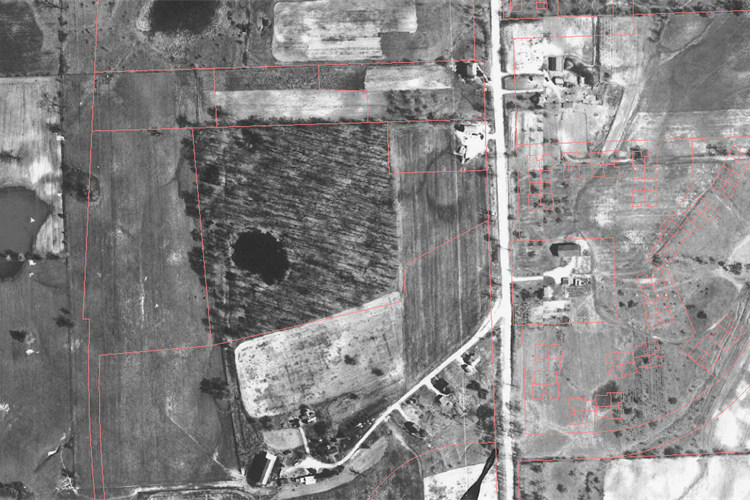History
Ann Arbor's city parks sit on the ancestral and traditional homelands of several indigenous Native peoples. Read a
land acknowledgement from the city and learn more about the early history of the land
here.
Aerial photos from 1940 show this area as one of the few pockets of woodland left untouched in this part of the city. Surrounding the area in the 1940s were orchards and farmland which gave way to housing developments in the 1960s. In March of 1964, H.E. Hansen sold the 10.3 acre parcel to the City with the wishes that it be preserved as a public park area. Mr. Hansen resided in a farm next to the undeveloped land. In these
1920s-1940 era photos you can see the park land in the background. In the fall of 1964, the property was officially named Hansen Park in honor of Mr. H.E. Hansen. A questionnaire was sent to neighbors to receive input on what they wanted in the park. Neighbors requested a walking trail and some wanted a playground for their children. During a public meeting, people were asked to vote on whether a playground should be built or not. The playground vote passed, and Parks and Recreation began plans for a small “tot play area, with a split rail fence since it is so close to Maple Road.” The playground is still in use and guarded by the split rail fence.
Ecological restoration efforts started in 1997 under NAP’s leadership. Work in Hansen began with building the trail and removing invasive species. In 2003, NAP conducted a prescribed burn throughout the entire park. Prescribed burns are used to remove invasive plants and help native plants. Spreading native seeds after the burn also helped to strengthen the native plant population. After the burn was conducted, a neighbor wrote that “Hansen is carpeted with yellow trout-lily – really beautiful. Also some large patches of toothwort, and smaller spots of wild geranium and May-apple with a few happy Jack-in-the-pulpits and a couple trillium. Do you suppose that burn had anything to do with it?” The controlled burn likely did encourage the native wildflowers to flourish. Visit
Natural Area Preservation (NAP) for more details on the efforts to protect and restore Ann Arbor’s natural areas. Check out the links below for NAP Newsletters featuring more reading on Hansen:

An aerial photograph from 1947 with parcel lines drawn, Hansen is the wooded area with the pond
